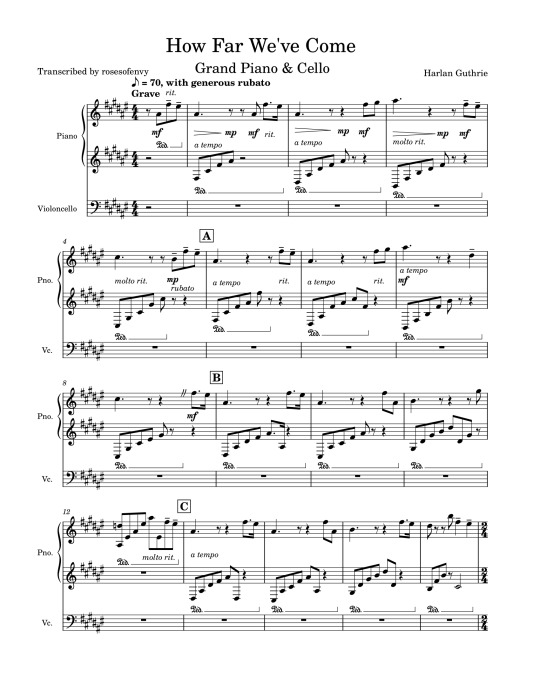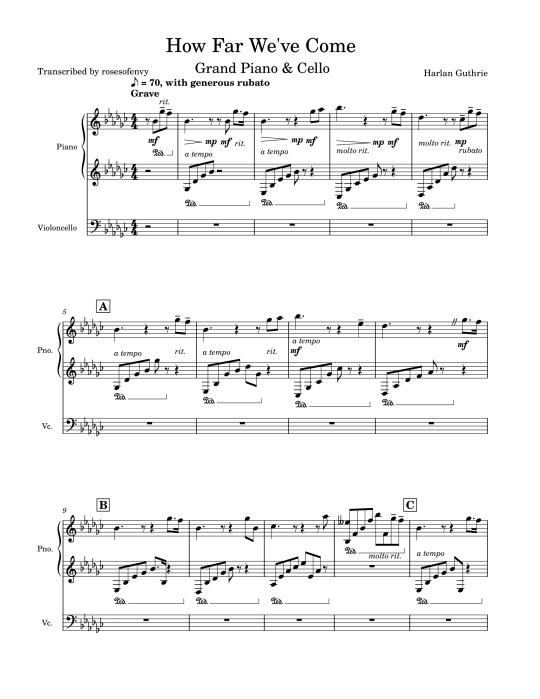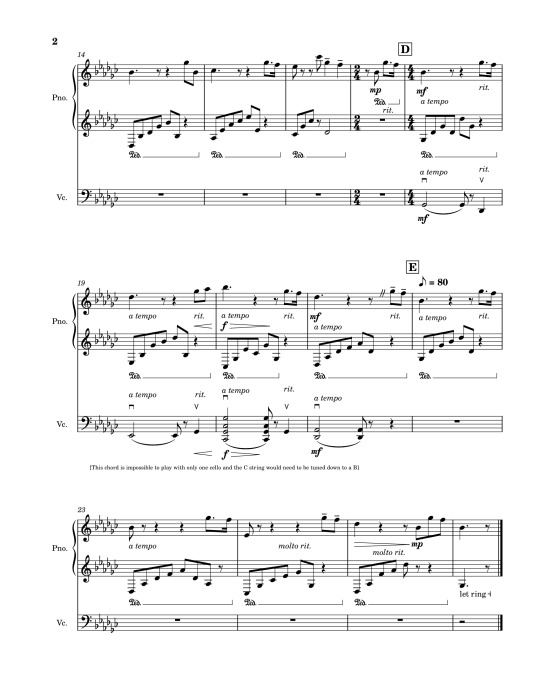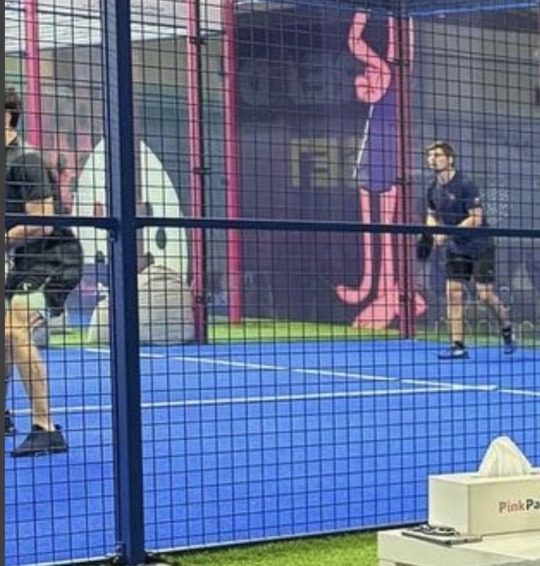#HOW FAR WE'VE COME
Explore tagged Tumblr posts
Text
F1 season may be over, but we still have the FIA Gala this friday!
The last time we saw both Charles and Max there was in 2022, fingers crossed we get to witness more of those little moments between them this year too 🤏🏻
1. posing together for the pic:


2. max looking at charles and laughing with him:


3. charles proudly watching max getting his trophy:

4. them chatting and smiling at the end of the event:


#hope to have this in a better quality this year#how far we've come#charles leclerc#max verstappen#lestappen#f1#formula 1#gifs#fia prize giving gala 2022
336 notes
·
View notes
Text
reinventing my music taste one mcyt animatic at a time
#BANG!#AJR#curses#the crane wives#how far we've come#matchbox twenty#matchbox 20#mcyt#hermitcraft#traffic smp#life series
95 notes
·
View notes
Text


How Far We’ve Come - Music Theory Analysis
[Disclaimer: I went to university for music as a violin primary and have the most confidence with classical strings. I passed my piano proficiency courses, but that is the extent of my piano knowledge. It has been a few years since I have done an in-depth composition analysis of any piece, let alone transcribing a piece by ear and then analyzing it. Music theory has never been my strong suit! Please excuse any mistakes in notation, and any inaccuracies in my transcription or analysis. I did my best and this was purely for fun *shaky thumbs up*]
----------------------
'How Far We’ve Come' by Harlan Guthrie is a duet between Grand Piano and Cello. This piece opens with solo piano, either in a pickup measure or in a single measure of 2/4 before transitioning to 4/4 time in measure 2. Throughout its entirety there are many moments of rubato which have been notated as ritardando and a subsequent a tempo. To most accurately follow the phrasing, listening to the recording is highly recommended.
This piece begins in the key of F#M or the enharmonic spelling of GbM. Although unpleasant to look at with either 6 sharps or 6 flats, depending on which spelling is followed, this key is often used by composers to invoke emotions of a conquest story, evoking relief, triumph, victory, and clarity. As we know from our story in Malevolent so far, this meaning is not lost on us. I have chosen to keep this piece as F#M since that is how I originally began transcribing it. I have also attached the GbM version at the end of the post, however all the analysis follows F#M spelling.
The lone piano begins on the third of our I chord with a hesitant, heavily rubato 8th note pickup into measure 1. The transition from measure to measure in this first phrase gains little confidence, especially with the transition from the pickup into m. 1 as this is the only instance in the piece where the set of 8th notes in the left hand do not lend itself into the next right hand pickup (four 8th notes instead of five). Each lead-in to the downbeat is stretched, pedal held throughout the measure to allow the sound to linger. Each press of the keys is deliberate, yet maintains a mezzo dynamic as the sound fades. m.2 is introduced with a vi chord, creating a hint of unease before resolving in m.3 to a IV(add7). We end our first phrase with a half cadence to a V chord, leading into a V7 as our next phrase begins with a B.
As we enter our second phrase it is similar to our first with m.5 beginning with a I chord, m.6 expands our vi chord compared to its first iteration, resulting in a more confident feel as we continue into m.7 with yet another expansion to our IV(add7). M.8 ends this phrase as we reach another half cadence V chord almost V7.
Beginning m.9 the piece has a few possible paths of analysis, we arrive on a vi chord if we are remaining in F#M, which unlike our other initial starting phrases this throws us into a melancholic mood. There is a possibility of modulation to the relative minor (D#m), however I believe it remains in F#M and utilizes inversions of our chords and will continue with this assumption for the next phrase.
Remaining in F#M, m.10 could be a vi(4/2) inversion, or a I(6/4) inversion. Because Measure 11 moves to a ii chord, I believe it makes more harmonic sense for m.10 to be a vi(4/2) inversion as moving from a I(6/4) - ii is less common than a vi(6/4) to a ii.
M.11 into m.12 is a fascinating progression. We have a V with the (g) in m.11, then we are descending to a Dnat, A#, E# progression. The Dnat is what has thrown me off the most, as it is a minor chord of sorts but doesn’t exist within our key of F#M, or relative D#m. The E# A# progression I believe is a I(4/2) chord, as it is leading us back into the next phrase. Even spelling enharmonically as a A#, Cx, E# chord it does not naturally occur within our existing key. After many hours of checking theory textbooks, writing out possible modulations, and playthroughs of the chords, I’m choosing to leave this as a V-I(4/2) progression and accepting my loss that I do not know what chord exists in the downbeat of m.12. However, I can say that resolving to something that is not a root tonic further creates this sense of melancholy.
Bringing us to our next phrase at m.13, similar to our previous phrase a vi chord but instead of resolving to an A# it resolves to the root D#. M.14 is identical to m.10 with the exception of the lower octave A#3 before resolving in m.15 to a ii chord until the fourth beat of the measure which leads us into measure 16 - resolving to a IV-V half cadence by the end of the measure.
Reaching m.18 we are returning to our original phrase. This is where our cello enters for the duet, in which I have some observations about musicality first. As the piano is using a significant amount of pedal to sustain the sound, the cello utilizes a wide vibrato to create a warm sound. Notably, this doesn’t occur as significantly when entering with the lower notes. The cello is confident, encouraging the piano forward and maintaining a solid momentum even with the hesitance the piano has shown.
M.18 we begin on a I chord, supported by the cello playing a low F# as the root. In the pause between phrases, it's as if you can feel the performers breathing together before they move to m.19, our vi(add7) chord.
Measure 20 I have quite a bit to talk about. Stacked chord analysis is not my forte (pun intended). From what I could hear, there is a B1, F#2, B2, F#3 in the cello, while the piano continues with a IV(add7) chord. B1 is impossible to play on a cello with traditional tuning, in order to achieve this note they would have to tune their lowest string - their C string - down a half step. The chord B1/F#2/B2/F#3 is also impossible to play on a single instrument. If one cello tuned their C down to a B, then they could feasibly play the bottom chord, possibly the two B’s in octaves. It is possible for a cellist to play an F#/B/F# chord, however it would be uncomfortable and not result in a good tonality with it being a triple stop - but, the second cello could split the chord and play a different combination (F#2,B2 or B2,F#) with success. Other solutions to this could be having a double bass play the pedal B, as it would be within their ability on and remain in the correct octave, or having the piano cover the pedal B. This massive chord then resolves simply to a half cadence V chord in measure 21.
Entering our last section, m.22, we return to a phrase similar to the beginning, with a confident I chord. With each measure we go to a more traditional chord progression to a V-IV-V in measures 23, 24, and 25 respectively. In an exciting turn of events, we land on a I chord in our final measure. The first PAC in the entire piece, and yet, it doesn’t sound as if the piece is finished. Throughout its entirety, all the phrases have been a form of inauthentic cadence. We end on a Perfect Authentic Cadence, a V-I, it should sound resolved. And yet, it continues on. The notes ring, and if left on repeat (as I have done for this analysis), it makes sense for it to continue.
In conclusion, I believe this duet is in an general AABBAA format, with A being Major key tonality and B encompassing a minor key tonality. This piece is a conversation, it’s full of emotion and hesitance and is a fantastic representation of everything we’ve seen Arthur and John go through so far in the podcast. I can’t help but think of “I’ve come so far…and I have miles to go before I sleep” with this piece as a reflection of that. This composition is saying “Look, see how far we’ve come, what we’ve done to get here. How we’ve changed and grown.” All this to say, it’s an amazing story and an amazing composition. If you made it this far, I’m glad you came along in this musical journey with me and feel free to add anything I may have missed (or possibly mistaken).


#malevolent#malevolent podcast#malevolent soundtrack#how far we've come#harlan guthrie#arthur lester#john doe#music theory#music theory analysis#piano#cello#I'm working on performing this but I only have access to a piano and cello once a week :'(#and I have so many other projects I've been working on *cries*#i spent a good week transcribing this#then a good two days analyzing it#my music theory chops are rusty#I was seriously pulling out my orchestration and harmony in context textbooks to check my facts#and i'm still worried i made mistakes askljdfhlsa#take all of this with a grain of salt!!!#envy writes
104 notes
·
View notes
Text
never forget harvey refers to louis as
1. his partner
2. the best lawyer the firm has ever had
3. someone i love

39 notes
·
View notes
Text
finding these tags from 2017

don't u worry random ao3 author, it's definitely a real tag now
32 notes
·
View notes
Text
Jealous Buck, 89 episodes apart!
2x01, Under Pressure
'Then, at the fire station, handsome new hire Eddie jeopardizes Buck's chances of being chosen for a fireman calendar.'
7x04, Buck, Bothered and Bewildered
'Meanwhile, Buck grows envious as Eddie forms a close bond with someone else.'
104 notes
·
View notes
Text

#how far we've come#2013-2023#good omens#our flag means death#supernatural#hannibal#bbc sherlock#superwholock#ourgoodshadows
277 notes
·
View notes
Text




I sat down on the street, took a look at myself/Said, "Where you goin', man? You know the world is headed for hell"
---
Enjoy some tragic Aztecship!
Song reference: How Far We've Come; by Matchbox 20
#yugioh#ygo#yugioh zexal#michael arclight#iii arclight#yuma tsukumo#aztecshipping#how far we've come
26 notes
·
View notes
Text

Nahhh that's actually so crazy
46 notes
·
View notes
Text


And here are the bonus drawings i did for the @kaarijazineofficial boyfriend pokedex cards 😁💕
#not käärijä but putting it in the tag for visibility#käärijä#alessandra mele#joost klein#can you believe i drew my first joost art at the end of DECEMBER#this was before he bleached his hair wow#how far we've come#käärijä fanzine#my art#put this joost on a shirt and i am eating ur mom im not fucking kidding is2g
50 notes
·
View notes
Text


confirmed lestappen padel teammates (and losers 😩)
87 notes
·
View notes
Text
How Far We've Come SMG4 MAP with @viral-spirals!
youtube
This is old and technically the very first SMG4 MAP I participated in. Not sure when the full thing will come out but I figured to post it now since I finished this back in December of last year lol
#smg4#smg3#smg4 fanart#smg3 fanart#smg4 animation#animation map#SMG4 Animation MAP#How Far We've Come#merp#my animation#Youtube
26 notes
·
View notes
Text

save me key change,,, save me

Also this one makes me tear up every time I hear it
#Grayscale’s listening to malevolent music what does that say about their mental health#WHO KNOWS! I fell asleep to how far we’ve come the other day it’s soooo#malevolent#how far we've come#faroe’s lullaby#gray’s yapping again
9 notes
·
View notes
Text
thinking about how david corenswet and tom brittney were the last two running for superman. 🥹


#✰ : nou.rambles#how far we've come#looking back at it now#i think tom brittney might have looked toooo much like henry cavill?#i can see the vision though#but im extremely happy with david 🥹#i remember being like... “he would make a great superman” when i first saw him in pearl#AHHH
21 notes
·
View notes
Text
Guys....
I don't want to alarm anyone, but I might finish Fool's Fare this week...
#liz speaks#liz writes#i'm trying really hard not to get emotional rn#omgggggggg#how far we've come#fool's fare#ff#pirate!jake hangman seresin
13 notes
·
View notes
Text
if they do not play "how far we've come" at any point in the pjo tv show then it was a failure. no i do not care how good the child actors are this is more important
#THIS IS A JOKE#(but seriously rick riordan you better play that fucking song it was the pjo fandom ANTHEM for so so long)#pjo series#pjo#pjo hoo toa#pjo fandom#percy pjo#rick riordan#pjo show#percy jackson#percy jackson and the olympians#pjo tv show#percy jackson tv show#percy jackson tv series#let's see how far we've come#how far we've come
65 notes
·
View notes